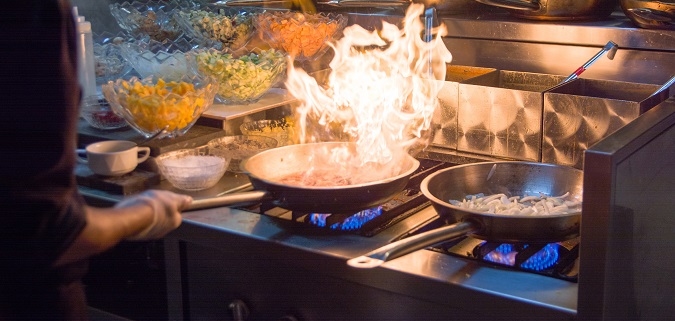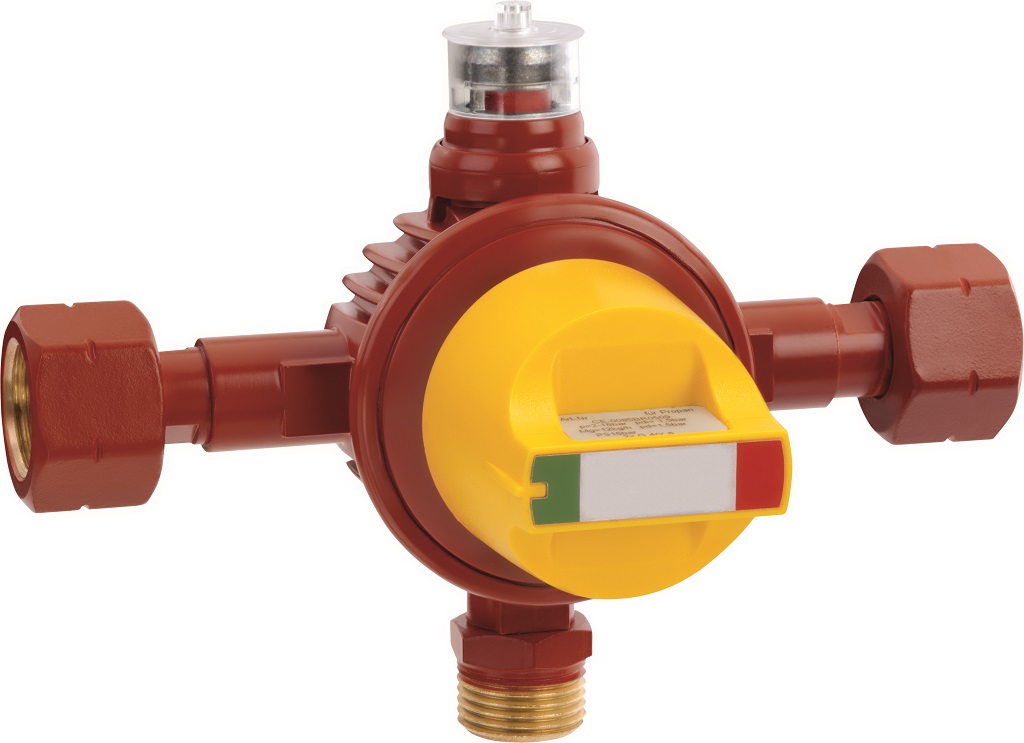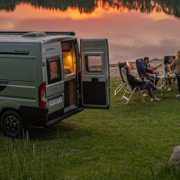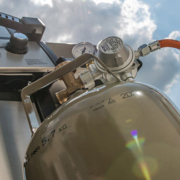How do I build up a four-cylinder system with 33 kg gas cylinders?
The requirement: A stable energy supply for gas stoves and hobs in the host’s kitchen. The solution: A four-cylinder system consisting of 33 kg gas cylinders. Because the operator really doesn’t want to have to constantly replace the gas cylinders when they’re operating continuously. However, before the final start-up of the system, the user or the system constructor should deal with the details in a targeted manner, especially with the combination of the components of the cylinder system.
Most multiple cylinder systems consist of two sides: Operation and reserve. The designation is basically self-explanatory, because LPG is taken from one side of the system; the other is therefore considered to be a reserve when the operating cylinders are empty.
This is the classic structure of a four-cylinder system. For the sake of completeness, however, it should also be mentioned that not only one variant exists. It is also possible, for example, to do without the operating and reserve sides and draw LPG from all four cylinders at the same time. In the following, however, we concentrate mainly on the “classic” of the multiple cylinder systems and its structure.
Pressure regulator
The heart of each four-cylinder system is the pressure regulator, also often referred to as a pressure reducer. As the name suggests, it regulates the uncontrolled high gas pressure that comes from the cylinders to the nominal pressure of the connected consumer equipment, such as gas boiler or gas stove.
The pressure regulators for four-cylinder systems with 33 kg gas cylinders absolutely require two safety devices: a so-called OPSO (overpressure shut-off device) and a PRV (pressure regulating valve). The standard for large cylinder systems is a pressure reducer with an outlet pressure of 50 mbar (millibar) and a capacity of 4 kg/h (kilograms per hour), which corresponds to a nominal capacity of around 51 kW (kilowatts).
Changeover valve
Even if the pressure regulator is the central component, the changeover valve is almost just as important for four-cylinder systems. The user can choose between an automatic and manual changeover valve or a double shut-off block.
The difference should be clear: For the former, the system automatically changes from operation to reserve; for the manual changeover valve or double shut-off block, the operator must do this themselves. A clear advantage of the automatic system: There is no interruption during the transition from operation to reserve. The special feature of the double shut-off block is that it is possible to draw gas simultaneously from all four cylinders – i.e. the operating and reserve side can “melt” with each other.
Gas hose
While the user requires pressure regulators and changeover valves in four-cylinder systems, they also need a total of four hose assemblies. They establish the connection between the individual 33 kg cylinders and the pipe system.
Since they are connected directly to the large cylinder, the gas hoses in turn must be suitable for the high pressure range (pressure-resistant up to and including 30 bar).
Four-cylinder system pipe system
In order to connect the large cylinders with changeover valve and pressure regulator or the downstream piping, some pipe sockets, adapters and compression fittings are required.
As putting these together can quickly become a Sisyphean task, we have designed finished sets for four-cylinder systems. These contain all described components such as pressure regulators, changeover valves, gas hoses and the complete pipe system for the supply system:
- Four-cylinder system with automatic changeover valve: order number 05 082 00
- Four-cylinder system with manual changeover valve: order number 05 081 00
- For simultaneous withdrawal: Four-cylinder system with double shut-off block: order number 05 080 00
Excess flow valve and ball valve
The design of the four-cylinder system in households (TRF) is complete with an excess flow valve and a ball valve with a thermal shut-off device TAE for indoors. These two components are not part of the sets for the four-cylinder system.

These must be selected individually when designing the four-cylinder system: Ball valve (left) and excess flow valve (right).
Withdrawal output
Finally, information about withdrawal: even if it’s theoretically possible to have an output of up to 4 kg/h via the pressure regulator, the user or the system planner should pay attention to the maximum withdrawal output of 33 kg cylinders and the different withdrawal scenarios.
Important note
Please note that the planning or work on the system described above may only be carried out by a qualified person.






